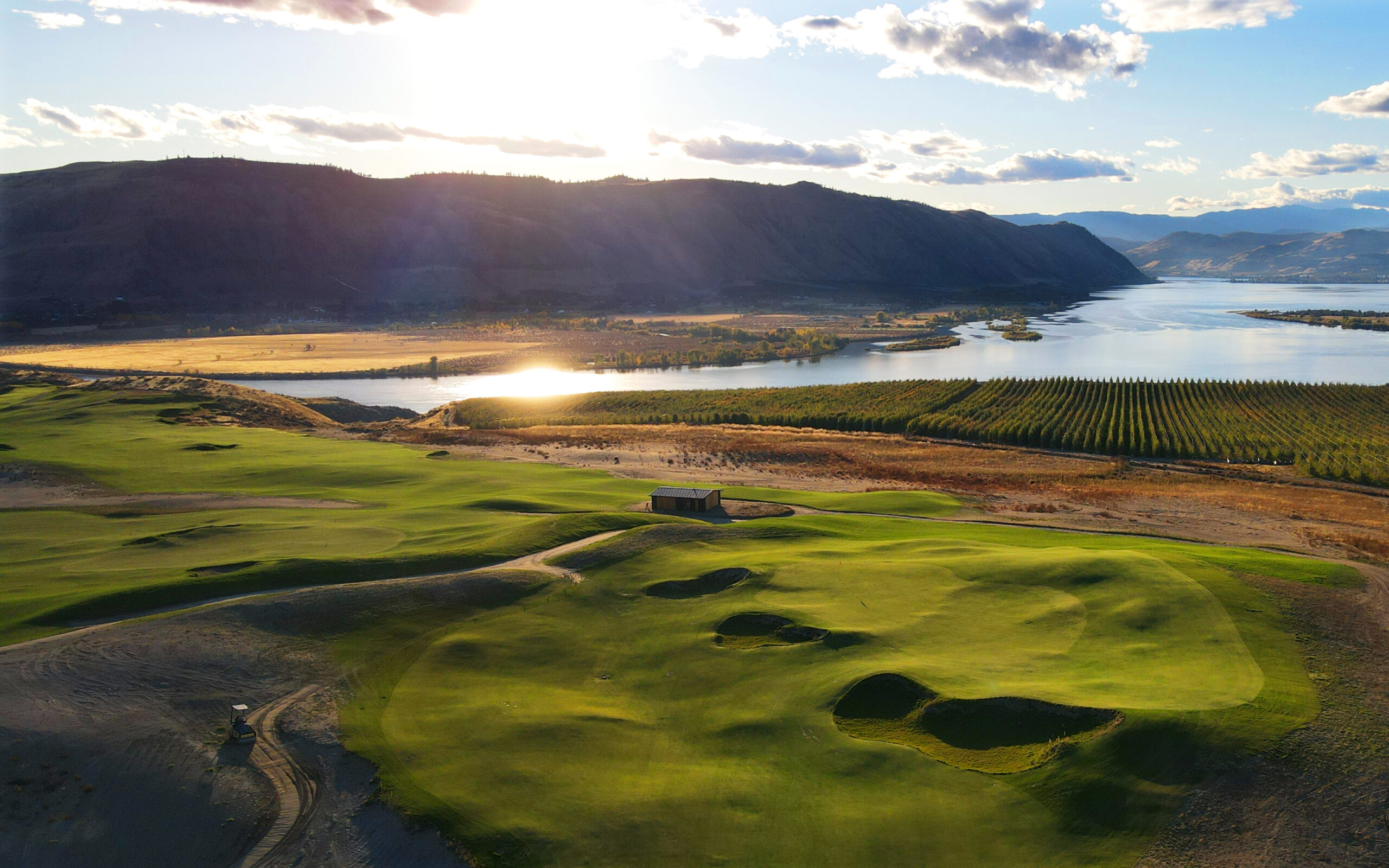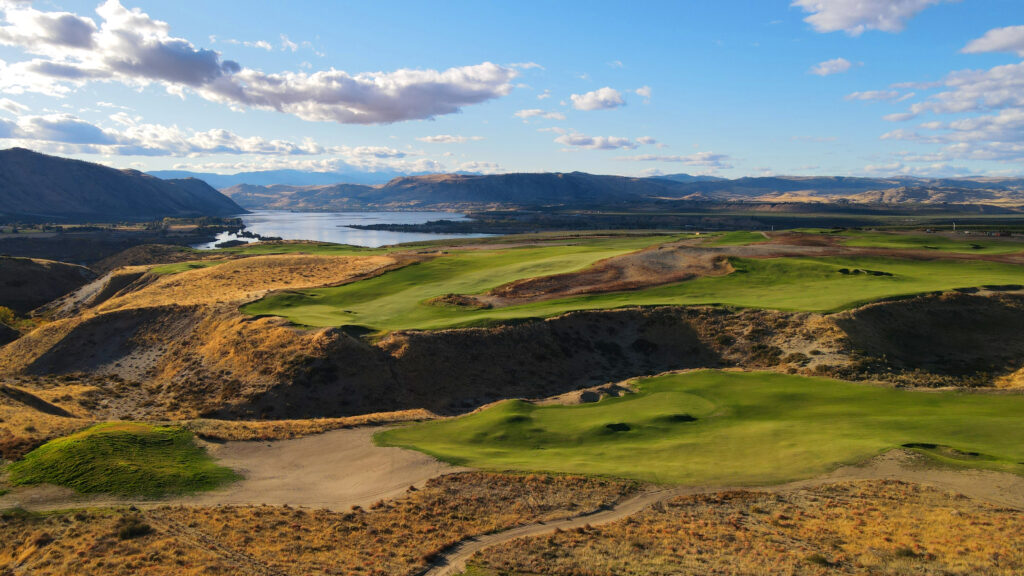
Scarecrow at Gamble Sands (Photo by Darin Bunch)
Gamble Sands recently pulled back the curtain, albeit briefly, on one of the newest courses in the destination golf world.
And it looks good — very good!
The “Scarecrow” course at the golf getaway in the wide-open farmland of eastern Washington is set to open to public and resort play in August 2025. When it does, the new 18-hole design from David McLay Kidd – the Scottish architect who created the original course at Bandon Dunes – will bring Gamble Sands’ growing golf offerings to 50 holes in total.
The early look, just before Gamble Sands closed for the 2024 golf season, whets the appetite for what’s to come.

Scarecrow at Gamble Sands (Photo by Darin Bunch)
Each of the 18-hole layouts at Gamble Sands were designed by Kidd. That’s somewhat of a rarity in the world of destination golf, where the trend is to enlist various architects or firms with unique styles for multiple courses. The obvious challenge for Kidd and design associate Nick Schaan was how to make the new sister course different from its sibling.
At Gamble Sands, which is set high above the Columbia River Valley near the apple and cherry orchards of the Gebbers family that owns the land, the differences start in the land itself.
The site for the 6,900-yard, par-71 Scarecrow course is more adventurous, built on a twisting saddle of rolling terrain and river-view ridgeline. Kidd has called it the “twisted sister,” with more holes that have steep drop-offs along the side of the fairways and greater shot-making demands with smaller greens than the original.
The new course sits on about 300 acres of rolling and rumpled terrain. That’s about twice the size of an average 18-hole course, but more compact than the Sands Course, which sprawls across 350 to 500 acres depending on how one outlines the layout.
“The fairways are still wide — in some cases, they are even wider (than the original),” said Schaan. “The whole golf course kind of climbs over this knob, through a saddle, up another knob, through a valley — you see a lot more of the river, hole after hole. And you see a lot more golf that you’re not playing across the site.”

Scarecrow at Gamble Sands (Photo by Darin Bunch)
Scarecrow also features higher spots, with peaks akin to the classic sand dunes found in areas like the sandhills of Nebraska or North Carolina, and sandy blowouts that Kidd and Schaan exposed and incorporated.
Expansive views are a hallmark of the Sands Course, and so too are the massive sandscapes throughout the routing. The approach is different at Scarecrow.
“If we replicated that again in the same fashion, that alone would make the golf courses look similar,” Schaan said. “But doing that in the steeper terrain becomes cumbersome, so the sand areas are broken into chunks and smaller pieces and compositions of clusters instead of these massive sand areas.”
In looking at the comparative steepness and tightness of the site contours during the construction process, Kidd and Schaan also determined the greens at Scarecrow needed to be smaller to fit into the spaces that made for the best green sites.
“There’s still tons of turf around the actual ‘cup-able’ areas,” added Schaan. “All the steeper contours that you can’t count as ‘green’ you can still use to roll a ball around. It’s different, but the playability is the same (as the Sands Course).”

Scarecrow at Gamble Sands
The Scarecrow course isn’t the only new addition golfers will find when they visit Gamble Sands in 2025.
The destination property, which also has a 14-hole par-3 course called ‘Quicksands,’ the 100,000 square-foot ‘Cascades’ putting course, and multiple food and beverage offerings, will debut 40 new luxury rooms with double king beds in Spring of 2025. The added accommodation overlooking Scarecrow will bring the inn’s capacity to 77 rooms in total.
But the new course will unquestionably be the prime draw come Fall of 2025, and anticipation is already running high.
The second 18 derives its name from the scarecrows that were a symbol of the old west and served as iconic and watchful guardians of the farmland.
While the crops are gone, a new version and vision of the scarecrow now stands on that part of the vast Gamble Sands property, overseeing a fertile expanse that serves a new purpose. And in this case, the Scarecrow seeks not to chase off but beckon itinerant golfers from the Pacific Northwest and beyond.

Scarecrow at Gamble Sands (Photo by Darin Bunch)

